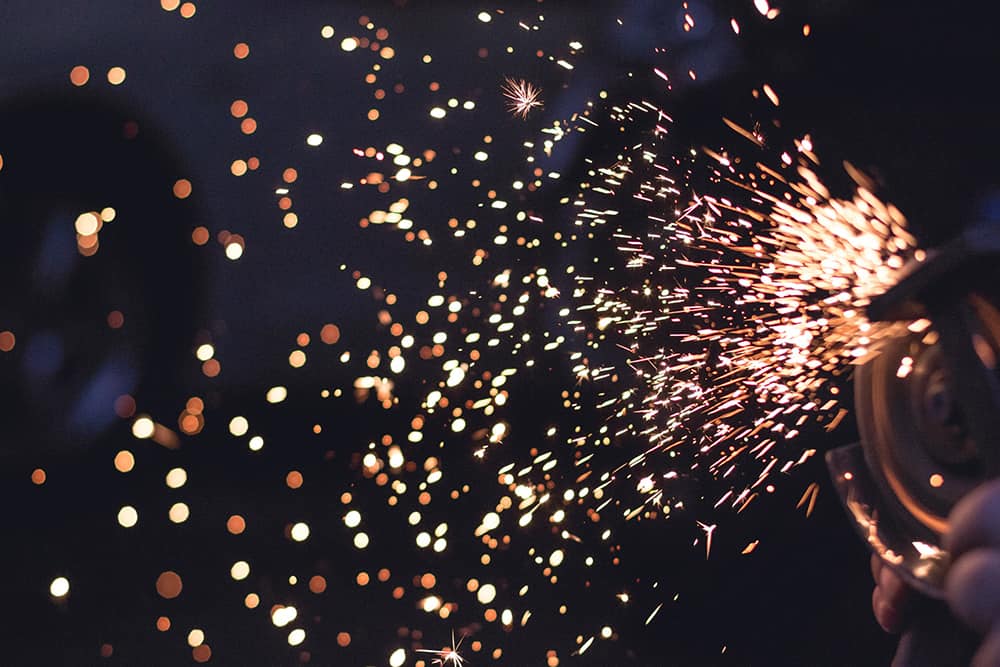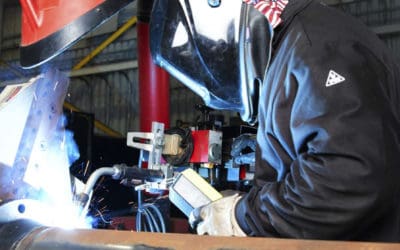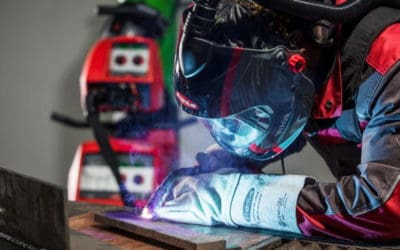In part one of this expert welding knowledge series, welding imperfections such as cracks, lack of fusion, penetration and porosity were discussed. This article looks at how common welding imperfections relate to the poor geometric shape of welds.
This article will concentrate on the following:
- Incomplete filled groove
- Excessive penetration
- Root concavity
Incomplete filled groove
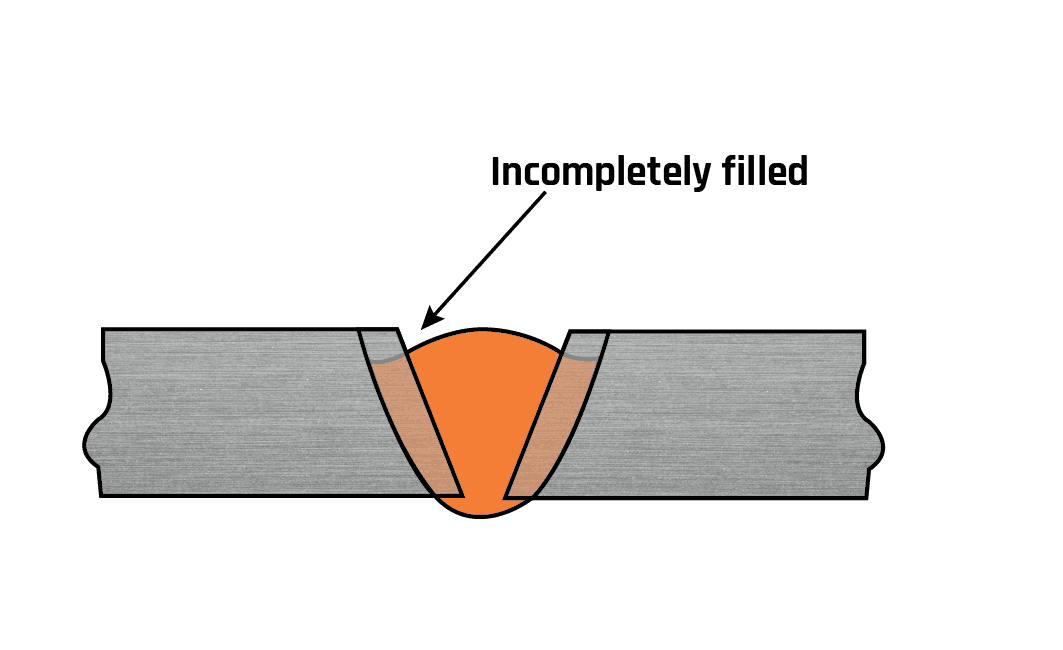
This is a continuous, or intermittent, channel in the surface of a weld, running along its length, due to insufficient weld metal.
Common causes
This problem arises when there has been insufficient filler metal (current or wire feed too low or too high a travel speed) so that the joint has not been sufficiently filled. The result is that the thickness of weldment is less than that specified in the design, which could lead to failure.
Acceptance
Most standards will not accept this type of imperfection, except perhaps over short lengths and even then a smooth transition is required. The designer expects the joint to be adequately filled, but not too much so (see excess weld metal).
Often the presence of this imperfection is an indication of poor workmanship and could suggest that further training is required.
Excessive penetration (Excess penetration bead)
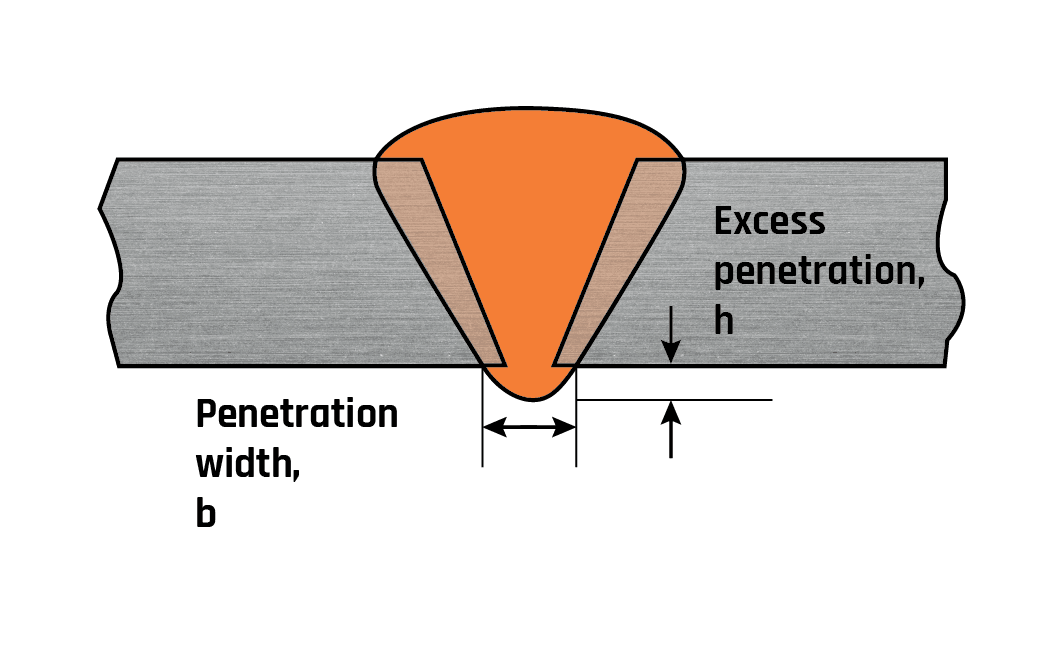
Excess weld metal protruding through the root of a fusion (butt) weld made from one side only.
With pipe welding, this type of imperfection may cause effects in the fluid flow that can cause erosion and/or corrosion problems.
Common causes
Penetration becomes excessive when the joint gap is too large, the root faces are too small, the heat input to the joint is too high or a combination of these causes.
Acceptance
The criteria that set the level of acceptable penetration depends primarily on the application code or specification.
BS 2971 (Class 2 arc welding) requires that the ‘penetration bead shall not exceed 3mm for pipes up to and including 150mm bore or 6mm for pipes over 150mm bore’.
BS 2633 (Class 1 arc welding) gives specific limits for smaller diameters pipes, eg for pipe size 25-50mm the maximum allowed bore penetration is 2.5mm.
ASME B31.3 bases acceptability on the nominal thickness of the weld, for instance, allowing for a thickness range of 13-25mm up to 4mm of protrusion. However, ASME notes that ‘more stringent criteria may be specified in the engineering design’.
BS EN ISO 5817 (Quality levels for imperfections), which supersedes BS EN 25817, relates the acceptable protrusion to the width of the under-bead as follows:
| Severity of service | Moderate, D | Stringent, B |
| Limit (up to maximum) | h ≤ 1mm + 1.0 b | h ≤ 1mm + 0.2 b |
| Maximum | 5 mm | 3 mm |
| For thicknesses > 3mm where: h = height of excess & b = width of root (see Fig.1) | ||
Avoidance
It is important to ensure that joint fit-up is as specified in the welding procedure. If welder technique is the problem then retraining is required.
Root concavity (suck-back; underwashing)
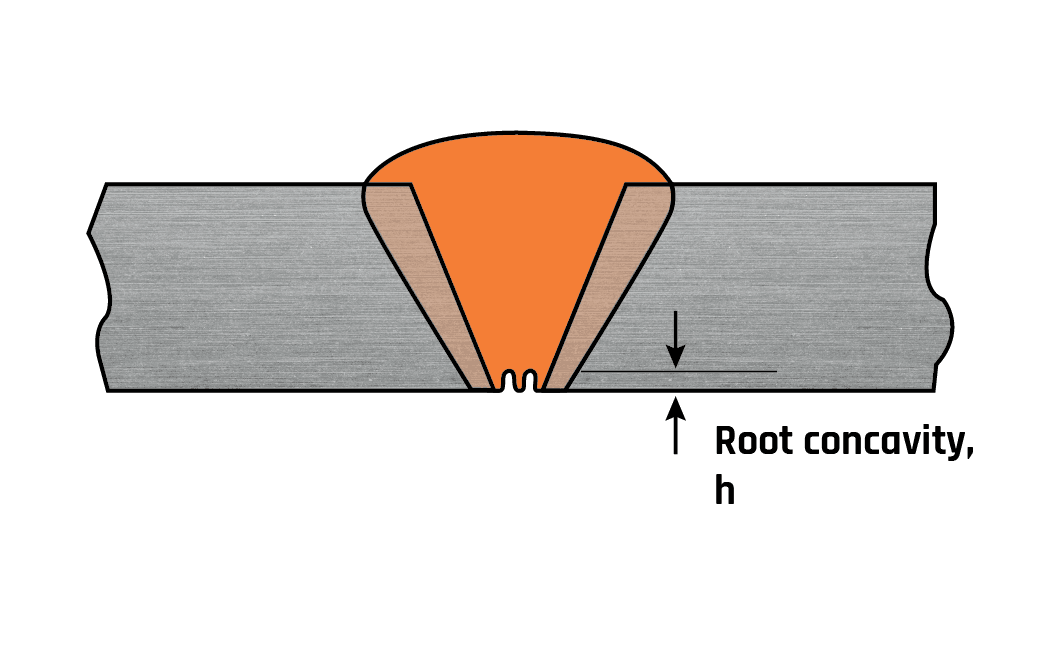
A shallow groove that may occur in the root of a butt weld.
Common causes
Root concavity is caused by shrinkage of the weld pool in the through-thickness direction of the weld. Melting of the root pass by the second pass can also produce root concavity.
This imperfection is frequently associated with TIG welding with the most common cause being poor preparation leaving the root gap either too small or, in some cases, too large. Excessively high welding speeds make the formation of root concavity more likely.
Acceptance
The root concavity may be acceptable. This will depend on the relevant standard being worked to. For example:
BS 2971 requires that:
a) there is complete root fusion
b) the thickness of the weld is not less than the pipe thickness.
ASME B31.3 requires that the ‘total joint thickness, including weld reinforcement, must be greater than the weld thickness’.
BS EN ISO 5817 sets upper limits related to the quality level, eg for thicknesses > 3mm Moderate, (D), h ≤ 0.2t but max 2mm for Stringent, (B), h ≤ 0.05t but max 0.5mm. Furthermore, a smooth transition is required at the weld toes.
In effect, the standards require that the minimum design throat thickness of the finished weldment is achieved. If the first two conditions of acceptance are met but the weld face does not have a sufficiently high cap, additional weld metal may be deposited to increase the throat.
Avoidance
It is important to ensure that joint fit-up is as specified in the welding procedure and that the defined parameters are being followed. If the welder technique is the problem then retraining is required.
Stay tuned for the third and final part of this series as we discuss the geometric shape imperfections of fillet welds.
